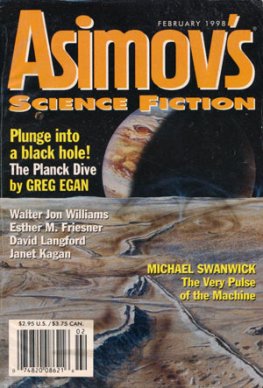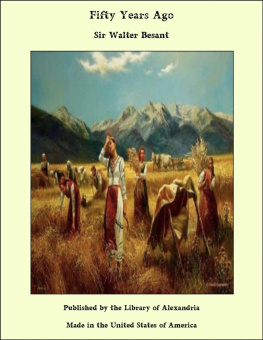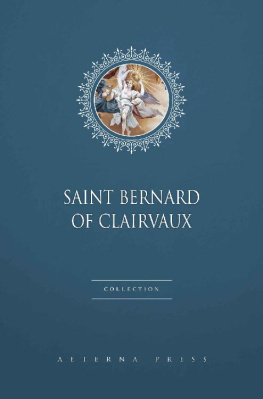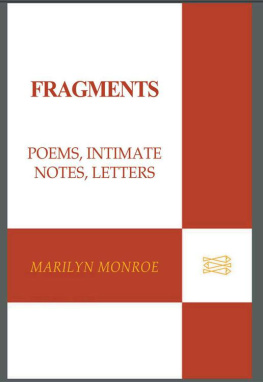Table of Contents
New York magazine, 1974
Staff for this book
Anne Quito
WRITER / EDITOR
Fausta Kingu
DESIGN
Natalia Olbinski
DESIGN
Bina Bernard
CONTRIBUTING EDITOR
Richard Litell
CONTRIBUTING EDITOR
Tina Buckman
PICTURE RESEARCH
Aimee Pong
Ivana Vasic
DESIGN ASSISTANTS
For Clay Felker
Columbia University Press
Publishers Since 1893
New York Chichester, West Sussex
cup.columbia.edu
Copyright 2019 Walter Bernard and Milton Glaser
All rights reserved
E-ISBN 978-0-231-54953-0
Library of Congress Cataloging-in-Publication Data
Names: Bernard, Walter, 1937- author. | Glaser, Milton, author.
Title: Mag men / Walter Bernard, Milton Glaser.
Description: [New York, New York] : Columbia University Press, [2019] | Includes index.
Identifiers: LCCN 2019025483 (print) | LCCN 2019025484 (ebook) ISBN 9780231191807 (cloth) | ISBN 9780231549530 (ebook)
Subjects: LCSH: Bernard, Walter, 1937- | Glaser, Milton.
Graphic artists United States Biography.
Magazine design United States History.
Graphic design (Typography) United States History.
Classification: LCC Z246.5.M34 B47 2019 (print)
LCC Z246.5.M34 (ebook)
DDC 741.6/520922 [B] --dc23
LC record available at https://lccn.loc.gov/2019025483
LC ebook record available at https://lccn.loc.gov/2019025484
Page 1 photo by Cosmos Sarchiapone
A Columbia University Press E-book.
CUP would be pleased to hear about your reading experience with this e-book at .
In the fall of 1938, when I was thirteen and living in a small pension in Versailles with my family (who were refugees from Nazi-occupied Austria), my fathers bachelor uncle came to visit from London. He had brought with him the current issue of Esquire magazine and forgot it in his room when he left. I found it later and carried it with me through France, Morocco, and to New York. I loved the feel of the glossy paper, the smell of the printed pages, the girls, the serious writing. On bad days I opened that magazine and a promise of a wonderful sort of life emanated from its pages like a seductive perfume.
Henry Wolf
Henry Wolf (19252005) was one of the twentieth centurys great art directors. He brought elegance and wit to his brilliant designs for Esquire, Harpers Bazaar, and Show magazines.
207 East Thirty-Second Street,
New York City
CHAPTERS
If, tomorrow, I had to choose just one medium, it would be magazines. They have more depth and visual pleasure than newspapers, more availability on the street than books, and less expense and more fact-checking than the Internet. I definitely would opt for the joys of magazines.
Also, if I had to name the kind of group that gave me the most learning, fun, and new ideas, it would be an editorial meeting of a magazine. There is something about word and visual people sitting together in a room, riffing off each other's ideas like jazz musicians, arguing and coming up with a result that no one of us would have imagined on our own. It's as much a proof of freedom as laughter, which is also a mark of edtorial meetings.
I learned most of this thanks to Clay Felker, Milton Glaser, Walter Bernard, and the creation of New York magazine. There we had the excitement and challenge of trying to capture on our pages the spirit of this city we love. We also had the added challenge of being the first of the city magazines and of raising enough money to start this new venture.
That was good for us, too. Because we had to endlessly explain what we wanted to do, this caused us to discover and plan what we really did want to do.
From the beginning, Milton and Walter were the creative ones who cared about both words and images. We, the word people, might have sacrificed images to get more words, but these two understood the importance of both. They even attended to the subtleties of typefaces right along with photography and illustration.
I'm grateful to both of them for this book that passes on the excitement and learning at magazineserrors, victories, and everything in between. I know that Mag Men will inspire future word-and-image creations that we can't even imagine right now.
And when that happens, we will all be in an editorial meeting together.
Gloria Steinem
An Interview by Anne Quito
A magazine is designed to arrive in our hands as a perfect package. Whether a school publication or a major newsstand periodical, a magazine offers a lively assortment of items that seem to come together seamlessly. Of course, this is an illusion, as Walter Bernard and Milton Glaser will quickly tell you. The award-winning graphic designers, who have worked on over 100 publications, know that each issue involves an enormous amount of teamwork, logistics, and luck. What follows is my interview with Walter and Milton about their five decades in the business.
When did you first become interested in designing magazines?
Walter Bernard: After a long days work as a carpenter, my father relaxed by reading the Saturday Evening Post and Life magazine after dinner. I remember snatching them up as soon as he was done. We had no TV until I was a teenager, so those magazines showed me the world beyond New Jersey. What thrilled me the most were the famous illustrators of the period: Norman Rockwell, Stevan Dohanos, Albert Dorne, Edwin Georgi, Constantin Alajalov, and many others.
Milton Glaser: My introduction to magazines came via comic books. A lot of kids got interested in design and illustration because of comic books. You might say they were once a big educational force. I learned to draw by copying comics like Smokey Stover and Superman. Growing up, I also read Liberty, the Saturday Evening Post, Readers Digest, and all the things that fueled America through those years. I didnt specifically pursue magazine design, but the first professional job I held was at Cond Nast. Figuring out the dynamic between words and images has always been fascinating, but I knew early on that my interests went beyond designing publications.
How did the two of you meet?
WB: As a student, I knew of Milton from his many illustrations on paperback book covers. We first met when I took a night class at the School of Visual Arts that he and Henry Wolf taught. They were both very good teachers, but Milton was more articulate, with the capacity to explain things more fully.
Why begin this book with a quote from Henry Wolf?
WB: I think it explains how someone falls in love with magazines. Henry Wolf was the greatest magazine art director of that time. His work was clever, whimsical, and extremely elegant. As a regular


















